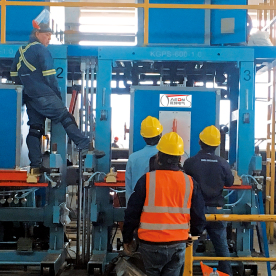[Solid State HF Welder Replacement Parts]Essential Guide to Solid State HF Welder Replacement Parts: Ensuring Peak Performance and Longevity for Your Equipment
When it comes to maintaining welding equipment, particularly solid-state high-frequency (HF) welders, understanding the importance of replacement parts is essential for optimal performance and longevity. Solid-state HF welders are known for their efficiency and versatility in various welding applications, making them a popular choice among industries. However, even the best machines require maintenance and occasionally need replacement parts to function effectively. In this article, we will explore the critical aspects of solid-state HF welder replacement parts, including their types, significance, and tips for keeping your welding equipment in top shape.
**Understanding Solid State HF Welders**
Solid state HF welders utilize semiconductor technology to generate high-frequency electrical waves, which are essential in the welding process. These machines are favored for their compact design, reduced power consumption, and improved reliability compared to traditional vacuum tube welders. However, like all machinery, solid-state HF welders experience wear and tear over time. This is where the need for replacement parts comes into play.
**Types of Replacement Parts**
1. **Power Supply Components**: The power supply is a critical component of solid-state HF welders. Replacement parts may include capacitors, transformers, and rectifiers. These components are essential for converting electrical energy into the required high-frequency output. Regular inspection and timely replacement of worn-out power supply components are crucial for maintaining the efficiency and performance of the welder.
2. **Control Boards**: The control board manages the overall system of the welder, including the high-frequency generation and modulation. If the control board becomes damaged or malfunctioning, it can lead to inconsistent welding performance. Replacement control boards are often necessary to restore the welder’s functionality. It’s advisable to keep spare control boards on hand, especially for older models that may have limited availability.
3. **Cooling Systems**: Solid-state HF welders often come equipped with cooling systems, including fans and cooling plates to dissipate heat generated during operation. Over time, these components can accumulate dust and debris, resulting in reduced cooling efficiency. Regularly replacing worn fans or cleaning cooling elements ensures that the welder operates at optimal temperatures, preventing overheating and potential damage.
4. **Electrodes and Tips**: The electrodes and tips are the parts that make direct contact with the workpiece during welding. These components can wear out due to the high temperatures and pressures involved. Regular inspection and replacement of electrodes and tips are essential to ensuring the quality and consistency of welds.
5. **Cables and Connectors**: High-frequency welders are connected by various cables and connectors that facilitate the flow of electrical energy. Inspecting these parts for wear and damage is critical, as frayed cables can lead to inconsistent welding and safety hazards. Having a set of replacement cables and connectors can ensure uninterrupted operation.
**The Importance of Quality Replacement Parts**
When it comes to purchasing solid-state HF welder replacement parts, quality is key. Using inferior or counterfeit parts can not only compromise the performance and safety of your welder but can also void warranties and lead to costly repairs in the long run. Always choose reputable suppliers and manufacturers known for their reliability and quality assurance.

Essential Guide to Solid State HF Welder Replacement Parts: Ensuring Peak Performance and Longevity for Your Equipment
**Maintenance Tips for Solid State HF Welders**
To extend the life of your solid state HF welder and reduce the necessity for frequent replacement parts, consider implementing the following maintenance tips:

Essential Guide to Solid State HF Welder Replacement Parts: Ensuring Peak Performance and Longevity for Your Equipment
– **Regular Cleaning**: Maintain cleanliness around the welder to reduce dust and debris accumulation, particularly around the cooling vents and fans. – **Routine Inspections**: Conduct regular inspections of all components, including the internal circuitry, cables, and exterior for signs of wear. – **Keep Spare Parts**: Stocking essential replacement parts ensures that you can make prompt repairs and prevent downtimes during critical projects. – **Professional Servicing**: Consider having a professional technician evaluate your welder annually to catch any potential issues early.

Essential Guide to Solid State HF Welder Replacement Parts: Ensuring Peak Performance and Longevity for Your Equipment
In conclusion, understanding solid state HF welder replacement parts is vital in ensuring your equipment continues to perform at its best. By recognizing the various types of parts and their significance and implementing sound maintenance practices, you can extend the lifespan of your welder and maintain high-quality welding output. Invest in quality replacement parts and prioritize regular maintenance to ensure your solid-state HF welder remains a reliable asset in your operations.High frequency welder for plastic
